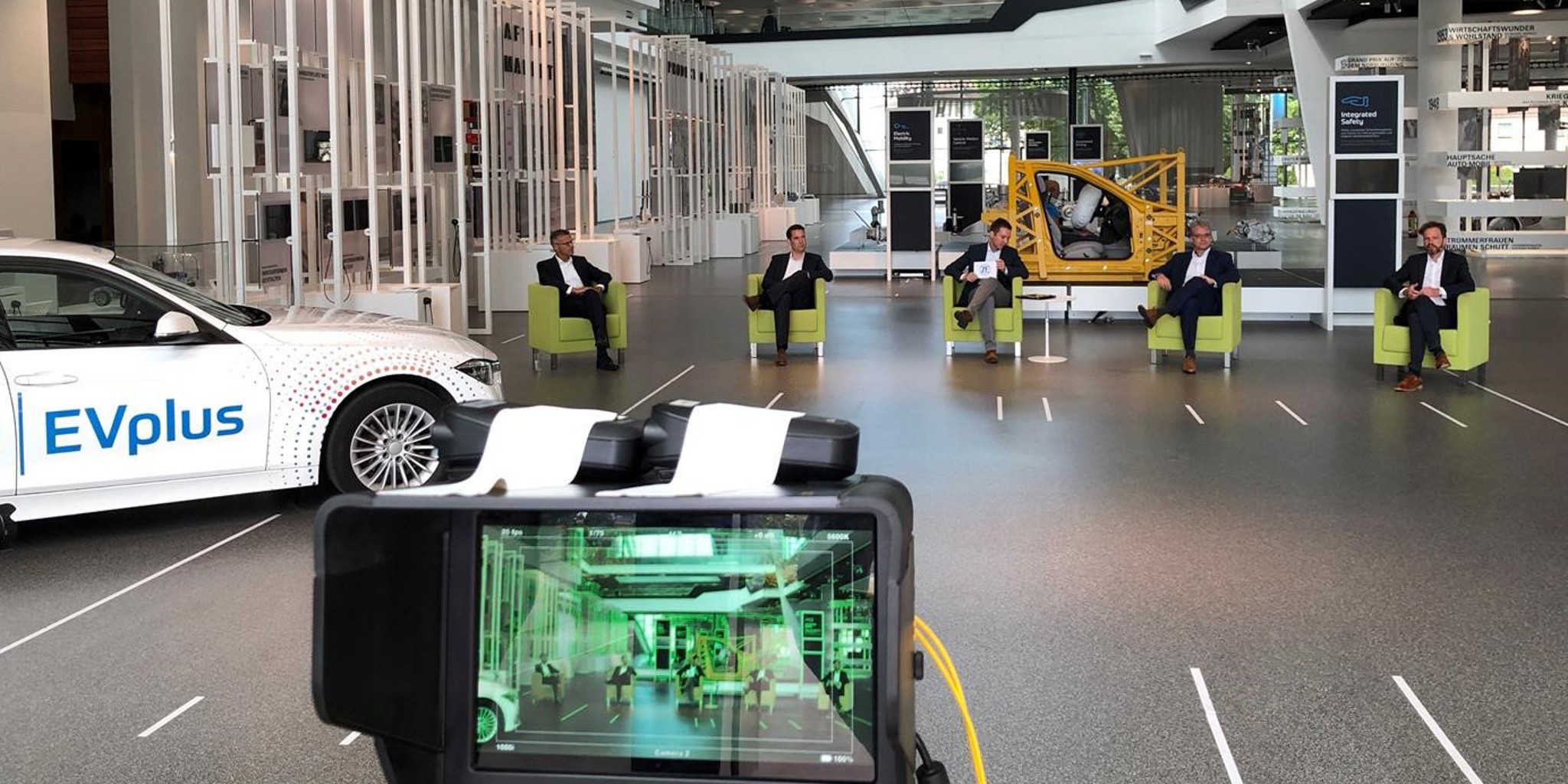The long-term goal of "zero emissions" also remains unchanged. The goal of zero emissions is laid down in the ZF corporate strategy "Next Generation Mobility". Stephan von Schuckmann, Head of ZF's Car Powertrain Technology division, emphasizes: “Corona does not change our strategy of electrifying and automating vehicles of all kinds. On the contrary: the crisis acts as an accelerator of transformation.” For von Schuckmann and all colleagues, one thing is certain: The future belongs to the electric drive.

Technology
#Emobility
Setting the Pace in Electric Mobility
Min Reading Time
In an approximately 70-minute video, a ZF expert panel explains the company’s view of tomorrow's mobility. Sit back and take part in this compact workshop of knowledge.

Society and legislators around the world demand CO2 reduction
Society and legislators around the world demand CO2 reduction
This view is logical, as national legislation and the discussions about future CO2 targets reflect the demands of society worldwide. People expect the transport sector in particular to reduce CO2 emissions. This is the only way to achieve the ambitious climate targets. It has long been apparent that electric mobility is picking up speed. With its products for cleaner mobility, ZF will not only benefit from this development, but will continue to set the pace in electromobility. With its modular systems, the technology group already offers its customers the flexibility they need to further drastically reduce fleet consumption and CO2 emissions. This avoids penalties, such as those envisaged in Europe for automobile manufacturers who exceed the 2021 limits.
ZF’s dual way: hybrid and purely electric
ZF’s dual way: hybrid and purely electric
Even ZF is already a sought-after partner when it comes to hybridization and electrification of vehicles, the company is continuously expanding this position. The orders for the next-generation plug-in hybrid transmission for passenger cars and the next ramp-ups of the further developed electric axle drive prove this. Both drives will be available from 2022. In addition to the pure battery electric drive, ZF considers the plug-in hybrid (Plug-in Hybrid Electric Vehicle, PHEV) to be the key technology for sustainable individual mobility.
PHEV already offer very convincing advantages today. For example, the plug-in hybrid is immediately available and quickly reduces CO2 emissions, provided that the driver regularly charges the battery and drives as much in electric mode as possible. In addition, the PHEV not only takes away the widespread fear of range, but also helps to relieve the still weak charging infrastructure. Like many experts, Dr. Michael Ebenhoch is also convinced: “Hybrid and pure electric vehicles will continue to coexist for many years to come, as both make sense in their respective fields of application. Since the exact distribution is uncertain, we at ZF are pursuing both paths intensively and equipping them with attractive solutions.” Ebenhoch is Head of Development Passenger Car Driveline Technology at ZF.

Paradigm shift: ZF’s "EVplus" concept refers to a fully-fledged electric car with combustion engine as a range guarantee.
New understanding of the plug-in hybrid
New understanding of the plug-in hybrid
It is precisely because the plug-in hybrid plays such an important role as a transition technology that the developers at ZF paid special attention to it. The new fourth-generation hybrid transmission is the central component of ZF’s "EVplus" concept. With this, ZF is carrying out a real paradigm shift: While hybrids were previously considered vehicles with combustion engine plus electric auxiliary engine, "EVplus" reverses this into the opposite direction: A passenger car equipped with the new ZF system is an electric car with a combustion engine for the rare long distance. The purely electric range of more than 100 kilometers in all weathers covers most everyday journeys. For longer trips into the weekend or on vacation, a modern internal combustion engine drive is available.
Important: Realizing efficiency gains in the overall e-car system
Important: Realizing efficiency gains in the overall e-car system
For future mobility, however, it is not enough to develop only the most powerful hybrid drives and purely electric drive solutions. It is much more necessary to master the complete e-vehicle system. ZF is able to do this because the Group is a complete systems supplier that is at home in all disciplines necessary for mobility: driveline technology, chassis technology, brake technology, safety technology, e-mobility, electronics, and ADAS. This, together with the ability to network systems, makes it possible to deliver perfectly coordinated solutions for all aspects of electromobility. Dr. Dirk Walliser, Head of Corporate Research & Development: “Today's electric drive technology is a very efficient technology per se. However, in addition to the optimization of hybrid or fully electric drive components, it is above all optimization of the overall system that offers great potential for increasing efficiency.”
Follow the explanations of our experts in the video and learn many technical details about solutions in ZF's e-mobility portfolio.
Get also first-hand information on automated driving and new digital business models.



